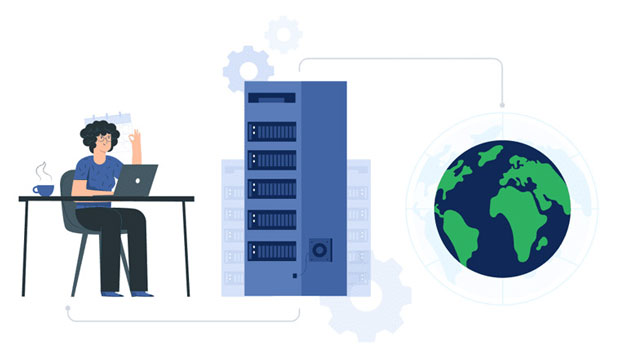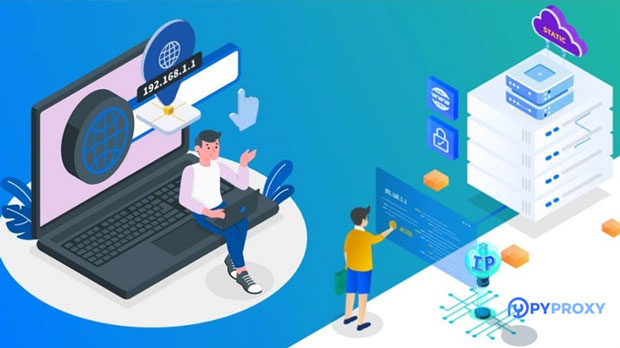Data scraping, the process of extracting large amounts of information from websites, is crucial for news websites looking to monitor and analyze information from across the web. This process allows journalists, content creators, and data analysts to gather articles, reports, and other key data to enhance their stories or derive insights for future publications. One of the most significant challenges in large-scale data scraping is the need to circumvent anti-scraping measures while maintaining efficiency and scalability. In this article, we will explore how data scraping tools and technologies can be used by news websites for large-scale data extraction, focusing on overcoming obstacles and achieving smooth data harvesting. Understanding the Need for Large-Scale Data Scraping in News WebsitesNews websites often require a substantial amount of data to remain competitive and provide up-to-date content. Large-scale data scraping serves multiple purposes, such as gathering news articles from various outlets, monitoring social media content, collecting market trends, and even tracking competitor performance. For a news outlet, having access to real-time data ensures they can provide fresh insights to their audience quickly, often before competitors.Additionally, news sites may need to gather specific data, such as stock prices, sports scores, or public opinion trends. Data scraping enables them to extract such information in bulk, saving time compared to manual collection, while ensuring the accuracy and comprehensiveness of the data. This continuous and automated data extraction also helps with content curation, SEO optimization, and sentiment analysis, giving news websites the ability to better tailor their articles to their audience’s preferences.Challenges in Large-Scale Data Scraping for News WebsitesWhile large-scale data scraping offers significant benefits, it comes with several challenges. First, news websites need to overcome various obstacles like rate-limiting, IP bans, CAPTCHA systems, and other anti-scraping measures commonly implemented by websites. These restrictions can make scraping inefficient or even impossible, requiring advanced tools and techniques to bypass them.Another issue news websites face is managing the enormous amounts of data they scrape. Once data is collected, it needs to be processed, stored, and analyzed efficiently to ensure it adds value to the journalistic work. Without the proper tools, it can be difficult to filter out irrelevant information, especially when dealing with a large volume of content.Finally, there is the issue of ethical concerns. News websites must ensure that they are complying with copyright laws and respecting the terms of use of the sites they scrape. Legal challenges surrounding data scraping can arise, particularly when large amounts of content are copied directly from another site. News organizations must strike a balance between utilizing scraping for content aggregation and respecting the intellectual property of others.How to Overcome Scraping Barriers: Technology and StrategiesTo perform large-scale data scraping effectively, news websites often rely on advanced scraping technologies and techniques to navigate obstacles like IP blocking, CAPTCHA verification, and website structure changes.1. Rotating IP Addresses and User Agents One of the primary defenses against scraping is IP-based blocking. Websites can monitor incoming requests and block IPs that send too many requests in a short period. To bypass this, scraping tools use rotating IP addresses. This means that the scraper can rotate through a pool of IP addresses to mask its origin, preventing detection and blocking by the target site. Similarly, rotating user agents ensures that the scraper mimics different devices or browsers, further avoiding detection.2. Captcha Solving CAPTCHA systems are used to confirm that the entity accessing the website is a human rather than a bot. Scraping tools can use CAPTCHA-solving techniques or third-party services to bypass these challenges. This allows news websites to continue scraping data without interruptions, ensuring continuous data flow.3. Data Extraction from Structured and Unstructured Sources News websites often scrape structured data (e.g., articles, headlines, images) and unstructured data (e.g., comments, user posts) from a variety of online platforms. Sophisticated scraping tools can handle both structured and unstructured data extraction, even from dynamic sites that use JavaScript to load content. This enables news sites to collect not only headlines but also multimedia elements, comments, and user engagement data, which are often vital for comprehensive reporting.Leveraging Machine Learning and AI in Data ScrapingFor large-scale data scraping to be truly effective, news websites can also leverage machine learning (ML) and artificial intelligence (AI) to automate many parts of the process and extract relevant insights from the scraped data.1. Automated Data Categorization and Sentiment Analysis After data is scraped, ML algorithms can help categorize articles, blog posts, and news updates based on keywords or topics. Sentiment analysis tools can analyze public opinion from news articles or social media posts, helping journalists understand how a particular issue is being received by the public. These tools can automatically sort data into relevant categories, saving time and effort for news editors.2. Content Summarization and Trend Identification AI can also help summarize scraped articles or reports, making it easier for journalists to get the gist of the information quickly. Additionally, AI tools can identify emerging trends by analyzing the frequency of certain topics or keywords, allowing news outlets to publish timely content based on real-time data.3. Predictive Analytics Machine learning can also be used to predict future events or trends based on historical data. For example, news outlets could use predictive models to forecast stock market movements or election results based on current and historical data. This capability enables news sites to stay ahead of breaking news stories and report on trends before they become widely known.Best Practices for News Websites to Ensure Ethical Data ScrapingWhile data scraping can provide immense value to news websites, it is essential to ensure ethical practices are followed. These best practices include:1. Respect Website Terms and Conditions Before scraping a website, it is important for news websites to review the terms of service to ensure they are not violating any copyright or intellectual property rights. Some websites expressly forbid scraping, while others may allow it under specific conditions. Compliance with these terms helps mitigate legal risks.2. Limit Scraping Frequency To avoid overloading a target website's server, news websites should implement controlled scraping rates. Setting up delays between requests can prevent websites from detecting an abnormal amount of traffic, reducing the risk of being blocked.3. Use Data Responsibly Data scraping can be a powerful tool for content curation and analysis, but it must be used responsibly. News organizations should ensure that the scraped data is only used for legitimate purposes, such as research, analysis, and reporting, and that they respect the privacy of individuals whose data may be included.Conclusion: Maximizing the Potential of Data Scraping for News WebsitesLarge-scale data scraping can be an invaluable tool for news websites aiming to stay ahead of trends, gather real-time data, and enhance the quality of their journalism. By leveraging the right tools and technologies, including rotating IP addresses, machine learning, and AI-driven analytics, news websites can overcome common scraping challenges and ensure their data extraction is efficient, ethical, and legally compliant.In an increasingly competitive media landscape, the ability to scrape and process data quickly can provide news outlets with a significant advantage, enabling them to provide fresh insights to their audience and drive their digital strategy forward. By embracing the potential of large-scale data scraping, news websites can continue to thrive and adapt to the ever-evolving demands of the modern digital landscape.
Apr 02, 2025
![arrow]()




























































